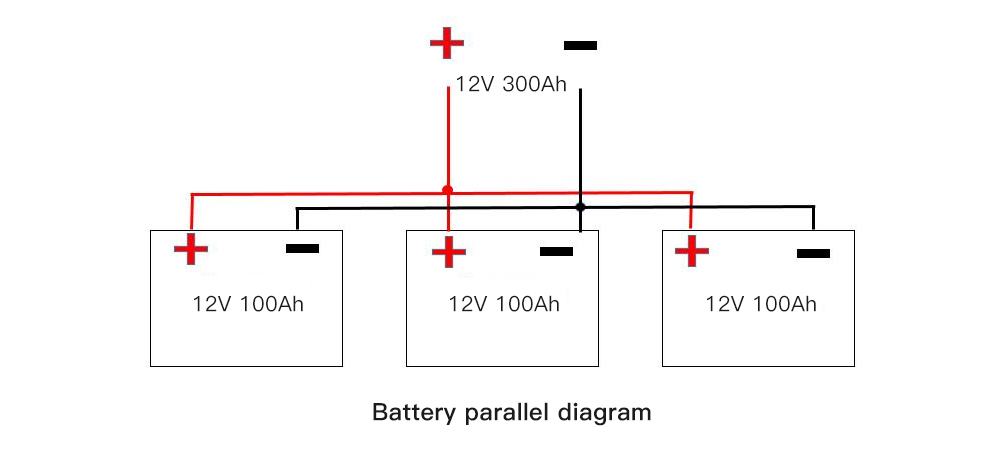In case you ever dealt with batteries you must most likely stumble upon the words parallel, series, and series-parallel, nonetheless just what are the meaning of these words?
Parallel, series-parallel, and series are the processes of linking 2 or more batteries collectively. However why should we link 2 or additional batteries? What’s the benefit in doing so?
By linking 2 or additional batteries in either parallel, series-parallel, or series, you might be able to increase the amp-hr capacity or voltage, or perhaps both; permitting power-hungry applications or more voltage applications.
In a parallel connection we can link 2 or additional batteries to enhance the amp-hr capacity. The capacity must increase in a parallel battery setup, nevertheless the battery’s volts stay the exact same.
For instance, if we link 5 12 Volt 100 Ah batteries, we can obtain a 12 Volts 500Ah battery unit.
While batteries are in a parallel connection the -ve terminals of all the batteries are linked in the whole string. Same process is done for the +ve terminals. If we need a 12 Volt 400Ah battery unit we require to link 4 12 Volt 100 Ah batteries altogether in a parallel connection.
This parallel setup increases the period in which batteries can provide power to devices. However, because of the increased amp-hr capacity, they might take more time for charging than batteries in a series connection.
In a series connection, you link 2 or additional batteries together. This is done to upsurge the battery system‘s total voltage. With this series connection you just increase the voltage and not the capacity.
For instance, if we link five (5) 12V 25 Ah batteries, we can observe a battery voltage of 60Volts and a battery capacity of 25 Ah.
To set up some batteries in a series connection, every battery should have the exact same capacity rating and voltage. Failing to do so could possibly harm the batteries. We can link two (2) 6V 10 Ah batteries in series however we cannot link a single 12V 10 Ah battery with a 6V 10 Ah battery.
Now comes the part for linking batteries in a series connection. You need to connect the -ve terminal of a battery to +ve terminal of the other and keep on doing so till all the batteries are linked. Then you need to link a cable/link to the -ve terminal of the very first battery in the string to your application. After that link another cable to the +ve terminal of the last battery in the string to your application.
While charging batteries in a series connection, we should utilize a battery charger that is matching with the battery unit’s voltage. We suggest the separate charging of every battery separately to prevent imbalance in battery.
SLA (Sealed lead-acid batteries) have actually been the preferred battery for high voltage, long string battery units for several yrs. Though lithium batteries are suitable for series connection, they need consideration to the PCM or BMS.
Finally, there are batteries in a series-parallel connection. When we link some batteries to enhance both the capacity and the voltage, a series-parallel connection is formed.
You can link six (6) 6Volts 100 Ah batteries altogether to have a 24 Volt 200 Ah system. This can be accomplished by setting up 4 batteries in 2 strings.
In such a setup, we can have 2 or additional sets of batteries which can be set up in both parallel and series to enhance the system’s capacity. In case you need assistance in setting up batteries, you can contact our battery experts.
